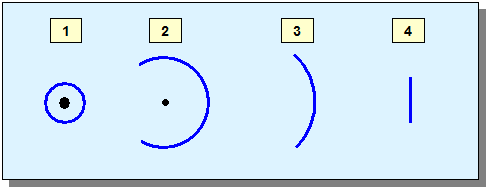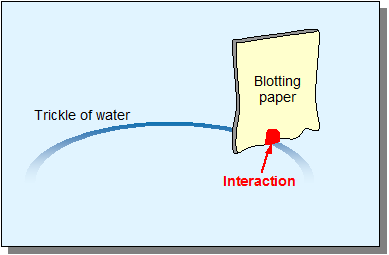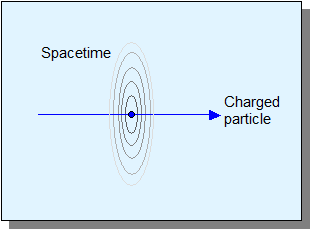Photons
In the precedent webpages, we have considered the wave-like behaviour of EM radiations. Here, we study its particle-like behaviour, i.e. the photon.
PhotonsPart 4
Spacetime Model |
PhotonsIn the precedent webpages, we have considered the wave-like behaviour of EM radiations. Here, we study its particle-like behaviour, i.e. the photon. Justification of the photonThe following experimentations seem to confirm the existence of the photon:
Notes: In 1905, when Einstein explained the PE effect using the Planck Quantum, the atom's internal
configuration was unknown.
Rutherford identified the atom to an "English pudding".
Electrons were distributed as raisins in the pudding.
In 1905, physicists did not know that the atom had a nucleus.
Einstein thought that the poor efficiency of the PE effect was in relation to the probability that the photon had
to meet an electron. Inconsistencies of the photon
These eleven inconsistencies - and probably more - mean that the photon concept, despite the fact it has been used since 1905, must be seriously revised. Note 1: Lene Hau (Harvard University) explains how she stops light in one place then retrieves and speeds
it up in a completely separate place.
(http://www.photonics.com/Article.aspx?AID=28520).
However, this experimentation, like many others, is explained in this website. Decrease in 1/r 2We pointed out that EM waves are propagated gradually in sCells. At a distance "r" from the emission source, it arrives at a moment when the charge contained in a sCell becomes too weak to be propagated in the next adjacent sCell. This limit is, in fact, a quantum. This is not exceptional since all objects are quantified, in one way or another. In accordance with Max Plank, the quantum is a necessity. The charge, which passes from one sCell to another, must be higher than this quantum. What happens when the charge transmitted in the sCells approaches this quantum?
We have only two possibilities:
The first possibility is not credible because, in Nature, nothing is created, nothing totally disappears. Therefore, the second possibility is more reasonable. Let's look at this possibility. The "Quantified Wave"The following figure represents the various steps of the wave during its travel, from its creation to a distance away. 
This is what we call a "quantified wave". So, when we see galaxies for example, our eyes do not perceive a photon but a "quantified wave". During all its travel, this wave remained grouped. Let's now consider the three phases, emission, propagation, and reception of a quantified wave. 1/ EmissionEM radiations are spacetime movements. They are not emitted as photons but as EM waves. 2/ PropagationOnce emitted, EM radiations remain in waveform. Beyond a certain distance, since the charge can not go under a quantum, there is a possibility that an "ordinary wave" becomes a "quantified wave". The following figure shows an EM wave that is propagated gradually in sCells. The charge is q at the source level, and is divided by 3, then by 5. In this figure, the quantum q/5 is reached at Time t2. The EM wave does not continue decreasing over time t2 because the quantum is reached.  3/ ReceptionWhen a part of the wave inside a sCell meets an element, atom or something else, an interaction may take place. The sCell is emptied of its charge. Gradually, it empties other adjacent sCells of the wave. 
ExampleThe following figure shows that an identical process also exists in the daily life. The EM wave is replaced by a trickle of water. The particle, which absorbs energy of the wave, is replaced by a blotting paper. The trickle of water is absorbed by the blotting paper at the place of interaction (measurement). Finally, the trickle of water diseappears to be completely absorbed by the blotting paper.  The ExperimenterThis example shows that the experimenter is unable to say if he has measured a photon or an EM wave since the two elements lead to identical results. Putting the blotting paper anywhere on the trickle of water produces the disappearance of it. In spacetime we have the same phenomenon. The experimenter believes that, at the red point of interaction, he measures a photon but in reality, he measures a quantified wave which disappears just after the measurement. Dq/DtAs we know, a stone makes eddies only when it moves. We have exactly the same phenomenon in spacetime. A motionless electron does not create any perturbation, or wave. It does when it moves.  So, we have a perfect match between this phenomenon on Earth (a stone in water) and electromagnetism (Dq/Dt). In both cases, the moving object produres eddies, or waves, which can be transformed in "quantified waves" if necessary. Since the 1905s, we consider that a moving particle emits tiny particles called "photons". Despite its popularity, this concept is disconcerting and does not make sense. Replacing "Photons" by "Quantified waves" solves this inconsistency. Validation of
|